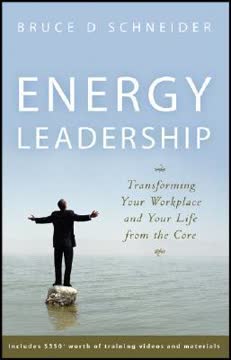Key Takeaways
1. Energy Leadership: Transforming Your Life from the Core
Energy Leadership is the process that develops a personally effective style of leadership, one that positively inf luences and changes not only yourself, but also those with whom you work and interact, as well as your organization as a whole.
Leadership is universal. Every individual is a leader, whether by conscious choice or by default, influencing themselves and others. The core of effective leadership lies in understanding and mastering one's own energy, which directly impacts personal and professional success. This concept extends beyond traditional roles like CEOs or managers, encompassing parents, teachers, and anyone interacting with others.
Energy is potential. In this model, energy is defined as potential output, reflecting one's level of consciousness or awareness. Humans often possess vast potential but utilize only a fraction of it. The goal of Energy Leadership is to help individuals tap into their full energetic potential, leading to increased productivity, peace, power, and health.
Transformative journey. The book chronicles Richard's journey as CEO of O'Connell Consulting, a company on the brink of bankruptcy. His transformation from a disengaged, problem-focused leader to an inspiring, anabolic one demonstrates how shifting personal energy can revitalize an entire organization, leading to record profits and improved morale.
2. The Energetic Self-Perception Chart: Your Map of Consciousness
Your level of consciousness, and the energy it produces, will actually attract or repel desired or undesired people, events, and outcomes into your home and work life.
Seven levels of energy. The Energetic Self-Perception Chart, or I Chart, illustrates seven distinct levels of energy or consciousness, grouped into three circles of awareness. This dynamic tool helps individuals understand their current energetic state and envision their potential for growth. Your "Average Resonating Level" (ARL) or "E-Factor" is a key indicator of your success.
Circles of awareness. The innermost "circle of self" (Levels 1 & 2) represents lower, catabolic energy, characterized by fear-based perspectives. The "circle of self-mastery" (Levels 3, 4, & 5) signifies a shift towards constructive, anabolic energy. The outermost "circle of self-transcendence" (Levels 6 & 7) represents the highest, most creative and non-judgmental states of being.
Law of Attraction. Your energetic level determines what you attract into your life. "Like attracts like," meaning your current energy will draw people, events, and outcomes that resonate with it, whether desired or not. Understanding your position on the I Chart is the first step to consciously raising your energy and attracting more positive experiences.
3. Catabolic vs. Anabolic Leadership: Destructive vs. Constructive Energy
Ideal leaders are anabolic leaders, meaning they create and automatically attract success. You may be shocked to learn that nearly 85 percent of all so-called leaders are actually catabolic, thereby destroying the energy and momentum of the people around them and the company as a whole.
Two types of energy. Catabolic energy is destructive, breaking down systems and people, while anabolic energy is constructive, building and inspiring. Catabolic leaders, often driven by fear, control, and blame, erode morale and productivity. Anabolic leaders, conversely, motivate and inspire extraordinary achievements.
Organizational impact. An organization is a living organism, and its energy mirrors that of its leader. Catabolic leadership leads to a "catabolic crunch," where negativity and disengagement spread like a virus, causing internal implosion. Richard's initial state, where his staff was "at each other's throats," exemplified this destructive dynamic.
Shifting the paradigm. The goal is to transform individuals and organizations into anabolic entities. This involves recognizing catabolic patterns (e.g., managing by pushing, focusing on problems, emotional disconnection) and consciously adopting anabolic behaviors (e.g., leading by encouraging, seeing opportunities, utilizing emotional intelligence). This shift is crucial for sustainable success and employee satisfaction.
4. Life Offers Opportunities, Not Problems: A Foundational Principle
Life offers neither problems nor challenges, only opportunities.
Perspective is power. This principle asserts that "problems" and "challenges" are merely creations of a fear-based mindset. When individuals and organizations transcend fear, what remains are opportunities. Richard's initial perception of O'Connell Consulting's decline as an insurmountable "mess" was a manifestation of this fear-based perspective.
Beyond positive thinking. This isn't just about superficial optimism; it's about a fundamental shift in perception. By reframing difficulties as opportunities, individuals can unlock new solutions and possibilities. Richard's journey began when he started to see his company's crisis not as an end, but as a chance for radical transformation.
Action from opportunity. Embracing this principle means actively seeking the inherent potential in every situation. Instead of being paralyzed by perceived problems, a leader operating from this perspective will identify avenues for growth and innovation. This mindset fuels proactive, constructive action rather than reactive, defensive measures.
5. The Answers Lie Within: Unlocking Your Inner Wisdom
The answers to all questions lie within. Every one of us is greater and wiser than we appear to be.
Internal solutions. When faced with challenges, people often look externally for solutions. However, this principle emphasizes that all answers reside within oneself. Richard's initial struggle to complete assignments, feeling "jammed up" and "uncomfortable," stemmed from his unconscious resistance to accessing his own inner wisdom.
Accessing potential. Individuals sometimes don't know how to find these internal answers because they are accustomed to operating from lower levels of consciousness, focusing on problems rather than solutions. The Core Energy Coaching process helps individuals like Richard tap into this deeper well of knowledge and insight.
Self-discovery. Richard's realization that his "uncomfortable" feeling about describing the world to an alien was a sign of Level 3 energy (taking responsibility for his viewpoint) demonstrated his growing self-awareness. This internal shift allowed him to begin seeing himself as capable of generating solutions, rather than just being a victim of circumstances.
6. Overcoming the Big Four Energy Blocks: Barriers to Success
The greatest enemy of individual freedom is the individual himself.
Internal restrictions. Energy blocks are internal barriers that restrict an individual's potential, often manifesting as external limitations. These blocks are deeply ingrained from past experiences and shape one's self-perception and worldview. Richard's journey involved recognizing and dismantling these blocks within himself and his team.
The four blocks:
- Limiting Beliefs: Preconceived notions that hinder action (e.g., "emotions don't belong in business," "this industry isn't for the long haul"). Roger Bannister breaking the four-minute mile is an example of overcoming a limiting belief.
- False Assumptions: Believing past events dictate future outcomes (e.g., "communication can't be improved because it was bad before").
- False Interpretations: Believing one's viewpoint is the only truth (e.g., Richard interpreting staff laughter as being "at his leadership").
- Gremlins (Inner Critic): The internal voice of self-doubt ("I'm not good enough," "It ain't gonna happen").
Unchaining potential. By exposing and challenging these blocks, individuals can liberate themselves from self-imposed limitations. Richard's public admission of his limiting beliefs and his team's subsequent applause demonstrated the powerful shift that occurs when these internal barriers are addressed.
7. The Power of Choice: Freedom in Every Moment
The greatest freedom is freedom of choice.
Conscious decision-making. This principle highlights that while external circumstances may be beyond one's control, the freedom to choose one's attitude and response always remains. Richard's initial feeling of being "stuck" was a manifestation of forgetting this fundamental freedom.
Beyond reaction. Leaders operating from this principle move from automatic reactions to conscious responses. When Richard chose to respond to Christina's salary request by involving her in the solution, rather than reacting with avoidance or dismissal, he demonstrated this power of choice.
Empowering others. By offering choices rather than issuing commands, leaders empower their teams. The author's approach with Richard, asking him to "choose" his assignments rather than dictating them, fostered Richard's buy-in and commitment. This also applies to employees, as seen when Richard helped his staff understand they had a choice in how they felt about company changes.
8. Shifting Energy: From Actions to Core Thoughts
Shifting how you think goes directly to the root causes of emotions and actions.
Three levels of change. To create sustainable transformation, energy shifts can occur at three levels: actions, emotions, and thoughts.
- Actions (Behavior Modification): The least effective, as it doesn't address underlying causes, but can be a useful last resort or for impressionable individuals.
- Emotions (Emotional Intelligence): More effective, as it connects people emotionally. Involves awareness, appropriate expression, and management of emotions. Richard's initial discomfort with emotions in the workplace was a barrier here.
- Thoughts (Core Beliefs): The most challenging but most effective, as it targets the root cause. Changing core thoughts leads to a new paradigm and a leap in consciousness.
Holographic thinking. The ability to "read" energy and understand underlying dynamics, as the author did with Richard's team, is part of "holographic thinking." This involves observation (visual, auditory) and intuition to perceive the true energetic state of individuals and organizations.
Breakthrough Laser Coaching. This technique directly targets core thoughts. It involves:
- Identifying a non-working core thought and its associated feeling.
- Validating the resulting inaction.
- Creating a new, empowering thought and feeling.
- Committing to new action. This process enables rapid breakthroughs by addressing the root of the block.
9. Level 3: Responsibility and Forgiveness for Cooperation
At Level 3, you are prepared to take responsibility for what you think and feel, knowing no one can make you feel anything.
First anabolic level. Level 3 marks the transition from destructive (catabolic) to constructive (anabolic) energy. The core thought is responsibility, moving beyond blaming oneself (Level 1) or others (Level 2). Richard's shift began when he publicly took responsibility for O'Connell Consulting's decline, surprising his staff and gaining their attention.
Cooperation emerges. While judgment may still exist, the focus shifts from blame to forgiveness and cooperation. Individuals at this level are willing to work with others, even those they don't prefer, to achieve shared goals. This fosters a more productive environment, as seen when Richard's team meetings began to yield valuable input.
"I win" mindset. At Level 3, the primary goal is "I win," but unlike Level 2, it can also encompass others winning if it serves one's own success. Richard's strategic use of Level 3 energy to get Don's buy-in for Kyle's hiring, by appealing to Don's ego and desire for success, exemplifies this.
10. Level 4: Compassion and Service from the Heart
At this level, you experience deep compassion for others and feel a genuine connection to them.
Heart-centered leadership. Level 4 is driven by concern, compassion, and a genuine desire to serve others. Leaders at this level prioritize the welfare of their team and customers, forming deep, trusting connections. Richard's growing appreciation for his staff and his efforts to understand their perspectives demonstrated his movement into this level.
Beyond taking personally. A key characteristic of Level 4 is the ability to not take things personally. Situations are viewed objectively, allowing for more efficient and effective problem-solving. Richard's ability to calm himself and his team during Nate's lawsuit threat, by reminding them not to take it personally, showcased this.
Nurturing approach. Level 4 leaders adopt a "softer" approach, incorporating emotional intelligence into their decision-making. They understand that gentleness is not weakness and that considering people's feelings leads to greater effectiveness. Richard's shift in communication with Christina, moving from vague responses to genuine care, exemplifies this nurturing style.
11. Level 5: Opportunity and Win-Win for Abundance
No matter what happens, people functioning with Level 5 energy look for opportunities in everything.
Beyond duality. At Level 5, individuals release much of their judgment, seeing situations not as "good" or "bad," but simply as they are. This understanding of duality allows for a profound sense of inner peace and control over one's experiences. Richard's ability to see Nate's lawsuit threat as an opportunity for growth, rather than just a problem, was a clear sign of Level 5 thinking.
Opportunity-driven. The driving force at this level is opportunity. Leaders consistently seek potential in every circumstance, leading to feelings of power and confidence. Richard's focus on upgrading his office and hiring Kyle, even amidst financial concerns, reflected his belief in abundant opportunities.
Synergy and greatness. Level 5 leaders expect and command greatness from others, seeing employees as gifted and full of potential. They foster environments where staff crave opportunities to express their talents and contribute. This leads to high performance, autonomy, and a "we both win" philosophy, as exemplified by Richard's vision for O'Connell Consulting's future.
12. Levels 6 & 7: Synthesis, Joy, and Pure Creation
Out beyond ideas of wrongdoing and rightdoing, there is a f ield. I’ll meet you there.
Self-transcendence. Level 6, the start of the third circle of awareness, is characterized by synthesis – the blending of all things into one. At this level, judgment is minimal, leading to an ongoing, unreasoned joy. Richard's realization that "in many ways I am like this guy" when reflecting on Nate, demonstrated his conscious choice to operate from this level of oneness.
Intuition and presence. Level 6 leaders lead by presence and intuition, knowing what's happening in their organizations without needing to ask. They are powerful yet humble, constantly seeking growth and sharing detailed information with their staff, fostering a team of deeply committed partners. Tonya's suggestion to promote Don, driven by merit rather than territory, was a powerful example of Level 6 thinking.
Pure creative power. Level 7 is the highest, unsustained level of energy, where the human form becomes almost invisible, akin to a high-speed fan blade. At this level, individuals access truth beyond illusion, engaging their natural genius to consciously create their world. It's a state of absolute passion and non-judgment, where "winning and losing are illusions," and life itself is the ultimate opportunity. This level embodies "detached involvement," being fully engaged yet detached from outcome.
Last updated:
Review Summary
Energy Leadership receives mixed reviews, with an average rating of 4.01 out of 5. Many readers find the energy level concepts insightful and transformative for personal and professional growth. The book's storytelling format is appreciated by some but criticized by others as forced or distracting. Positive reviewers praise the practical applications and potential for mindset shifts, while critics argue the content lacks depth or relies on pseudoscience. Some readers note the book's impact on their coaching practices and leadership styles, while others find it too idealistic for real-world application.
Similar Books


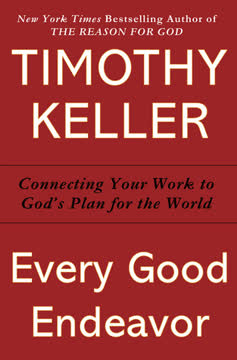
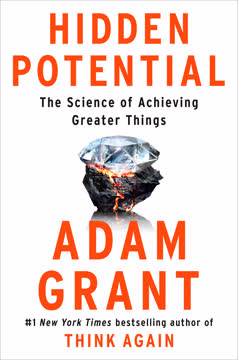
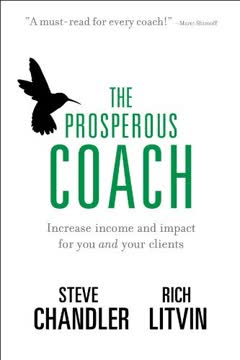
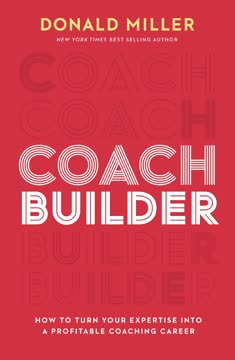

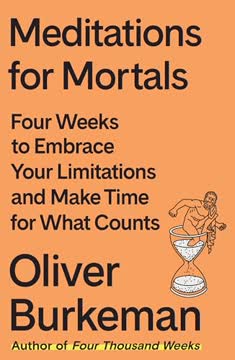
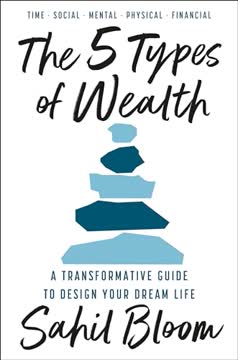

Download PDF
Download EPUB
.epub digital book format is ideal for reading ebooks on phones, tablets, and e-readers.
